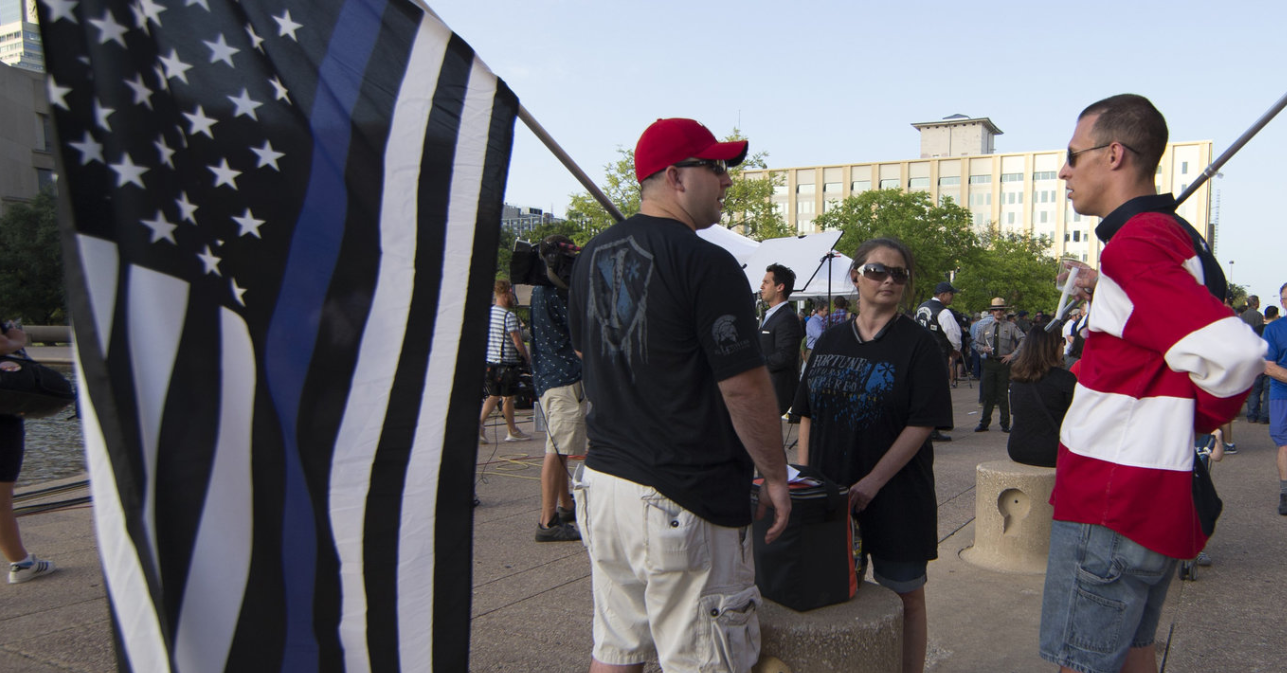
As protests over policing continue to convulse cities throughout the U.S., one symbol keeps showing up: a black-and-white American flag with one blue stripe.Recently, the flag was flown from the back of a car alongside protests in South Dakota, and burned outside the Utah State Capitol. When deputies hoisted the flag outside government buildings in Cincinnati, Ohio, and Orange, California, the sheriffs in both communities were sharply criticized. Officers have worn versions of the flag on face masks while clashing with protesters in Baltimore and in Washington, D.C.Those who fly the flag have said it stands for solidarity and professional pride within a dangerous, difficult profession and a solemn tribute to fallen police officers. But it has also been flown by white supremacists, appearing next to Confederate flags at the 2017 ‘Unite the Right’ rally in Charlottesville, Virginia. County officials in Oregon recently paid $100,000 to a black employee of a law enforcement agency there, after she said she was harassed by coworkers for complaining about her colleagues displaying the flag at work.Now, as police again become the focal point of a fight for racial equality in the U.S., the flag has returned to both mirror and amplify divisions.But how did this flag come to be so pervasive? And what does it really stand for?











